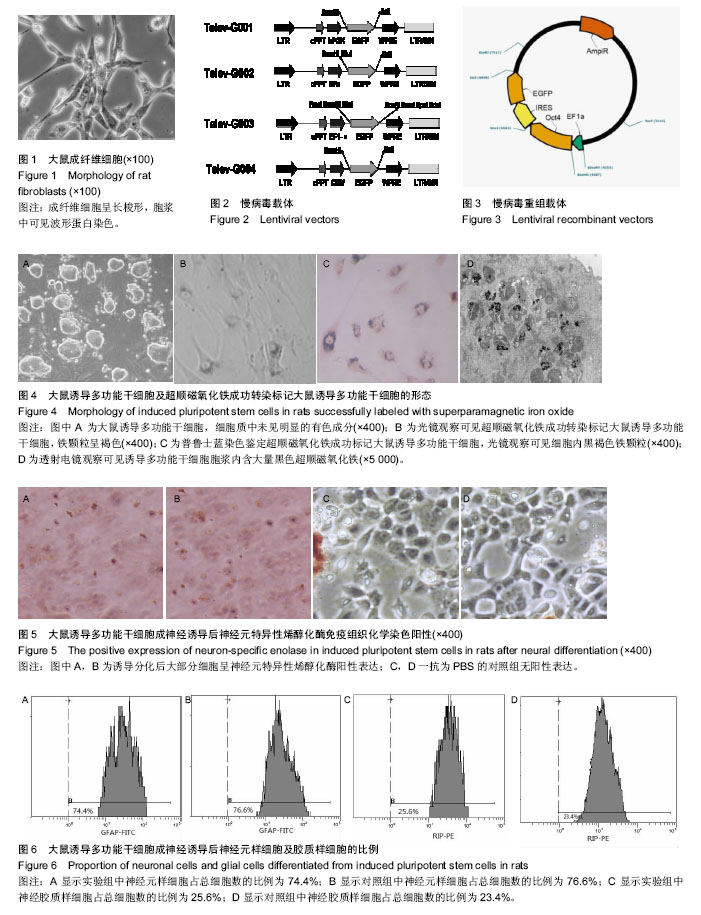| [1] Nakamura M, Okano H. Cell transplantation therapies for spinal cord injury focusing on induced pluripotent stem cells. Cell Res. 2013;23(1):70-80.[2] Malik N, Rao MS. A review of the methods for human iPSC derivation. Methods Mol Biol. 2013;997:23-33.[3] Ho MC, Huang CY, Lee JJ, et al. Generation of an induced pluripotent stem cell line, IBMS-iPSC-014-05, from a female autosomal dominant polycystic kidney disease patient carrying a common mutation of R803X in PKD2. Stem Cell Res. 2017;25:38-41.[4] Haq S, Suresh B, Ramakrishna S. Deubiquitylating enzymes as cancer stem cell therapeutics. Biochim Biophys Acta. 2017;1869(1):1-10.[5] Warren CR, Cowan CA. Humanity in a Dish: Population Genetics with iPSCs. Trends Cell Biol. 2017 Nov 23. [Epub ahead of print][6] Yoo M, Carromeu C, Kwon O, et al. The L1 adhesion molecule normalizes neuritogenesis in Rett syndrome-derived neural precursor cells. Biochem Biophys Res Commun. 2017; 494(3-4):504-510. [7] Geis FK, Galla M, Hoffmann D, et al. Potent and reversible lentiviral vector restriction in murine induced pluripotent stem cells. Retrovirology. 2017;14(1):48.[8] Barczewska M, Wojtkiewicz J, Habich A, et al. MR monitoring of minimally invasive delivery of mesenchymal stem cells into the porcine intervertebral disc. PLoS One. 2013;8(9):e74658.[9] Wang J, Xie J, Zhou X, et al. Ferritin enhances SPIO tracking of C6 rat glioma cells by MRI. Mol Imaging Biol. 2011;13(1): 87-93.[10] Cromer Berman SM, Kshitiz, Wang CJ, et al. Cell motility of neural stem cells is reduced after SPIO-labeling, which is mitigated after exocytosis. Magn Reson Med. 2013;69(1): 255-262.[11] 马艳,张德清,陈乐,等.超顺磁性氧化铁纳米粒子标记人骨髓和脐带间充质干细胞[J].中国组织工程研究,2012,16(45): 8398-8405.[12] Kim JB, Zaehres H, Wu G, et al. Pluripotent stem cells induced from adult neural stem cells by reprogramming with two factors. Nature. 2008;454(7204):646-650.[13] Liu H, Zhu F, Yong J, et al. Generation of induced pluripotent stem cells from adult rhesus monkey fibroblasts. Cell Stem Cell. 2008;3(6):587-590.[14] Li XX, Li KA, Qin JB, et al. In vivo MRI tracking of iron oxide nanoparticle-labeled human mesenchymal stem cells in limb ischemia. Int J Nanomedicine. 2013;8:1063-1073.[15] Qin JB, Li KA, Li XX, et al. Long-term MRI tracking of dual-labeled adipose-derived stem cells homing into mouse carotid artery injury. Int J Nanomedicine. 2012;7:5191-5203.[16] Schweizer PA, Darche FF, Ullrich ND, et al. Subtype-specific differentiation of cardiac pacemaker cell clusters from human induced pluripotent stem cells. Stem Cell Res Ther. 2017; 8(1):229.[17] Kim IG, Gil CH, Seo J, et al. Mechanotransduction of human pluripotent stem cells cultivated on tunable cell-derived extracellular matrix. Biomaterials. 2018;150:100-111.[18] Weiss MJ, Orkin SH. In vitro differentiation of murine embryonic stem cells. New approaches to old problems. J Clin Invest. 1996;97(3):591-595.[19] Li D, Ni H, Rui Q, et al. Deletion ofMst1 attenuates neuronal loss andimproves neurological impairment inarat model oftraumatic brain injury. Brain Res. 2017 Oct 17. [Epub ahead of print][20] Wang X, Wang D, Zhou Z, et al. Subacute oral toxicity assessment of benalaxyl in mice based on metabolomics methods. Chemosphere. 2018;191:373-380.[21] Sivolap YP, Damulin IV, Voskresenskaya ON. Traumatic brain injury: neurologic and psychiatric aspects. Zh Nevrol Psikhiatr Im S S Korsakova. 2017;117(9):94-98.[22] Donnelly K, Donnelly JP, Warner GC, et al. Longitudinal study of objective and subjective cognitive performance and psychological distress in OEF/OIF Veterans with and without traumatic brain injury. Clin Neuropsychol. 2017. [Epub ahead of print][23] Wilkinson AA, Dennis M, Taylor MJ, et al. Performance Monitoring in Children Following Traumatic Brain Injury Compared to Typically Developing Children. Child Neurol Open. 2017;4:2329048X17732713.[24] Zheng X, Xie Q, Li S, et al. CXCR4-positive subset of glioma is enriched for cancer stem cells. Oncol Res. 2011;19(12): 555-561.[25] Qin J, Li K, Peng C, et al. MRI of iron oxide nanoparticle-labeled ADSCs in a model of hindlimb ischemia. Biomaterials. 2013;34(21):4914-4925.[26] Kubiak JZ, Ciemerych MA. From Gurdon to Yamanaka--a brief history of cell reprogramming. Postepy Biochem. 2013; 59(2):124-130.[27] Menon DK, Schwab K, Wright DW, et al. Position statement: definition of traumatic brain injury. Arch Phys Med Rehabil. 2010;91(11):1637-1640.[28] Hyder AA, Wunderlich CA, Puvanachandra P, et al. The impact of traumatic brain injuries: a global perspective. NeuroRehabilitation. 2007;22(5):341-353.[29] Asemota AO, George BP, Bowman SM, et al. Causes and trends in traumatic brain injury for United States adolescents. J Neurotrauma. 2013;30(2):67-75.[30] Takahashi K, Yamanaka S. Induction of pluripotent stem cells from mouse embryonic and adult fibroblast cultures by defined factors. Cell. 2006;126(4):663-676.[31] Csöbönyeiová M, Danišovi? ?, Polák Š.Induced pluripotent stem cells for modeling and cell therapy of Parkinson's disease. Neural Regen Res. 2016;11(5):727-728.[32] Petri-Fink A, Rothen-Rutishauser B. Nanoparticles and cells: an interdisciplinary approach. Chimia (Aarau). 2012;66(3): 104-109.[33] Wang C, Ravi S, Martinez GV, et al. Dual-purpose magnetic micelles for MRI and gene delivery. J Control Release. 2012; 163(1):82-92.[34] Edlow BL, Chatelle C, Spencer CA, et al. Early detection of consciousness in patients with acute severe traumatic brain injury. Brain. 2017;140(9):2399-2414.[35] Keselman P, Yu EY, Zhou XY, et al. Tracking short-term biodistribution and long-term clearance of SPIO tracers in magnetic particle imaging. Phys Med Biol. 2017;62(9): 3440-3453.[36] Ngen EJ, Wang L, Gandhi N, et al. A preclinical murine model for the early detection of radiation-induced brain injury using magnetic resonance imaging and behavioral tests for learning and memory: with applications for the evaluation of possible stem cell imaging agents and therapies. J Neurooncol. 2016; 128(2):225-233.[37] Neubert J, Glumm J.Promoting neuronal regeneration using extracellular vesicles loaded with superparamagnetic iron oxide nanoparticles.Neural Regen Res. 2016;11(1):61-63. |
.jpg)

.jpg)